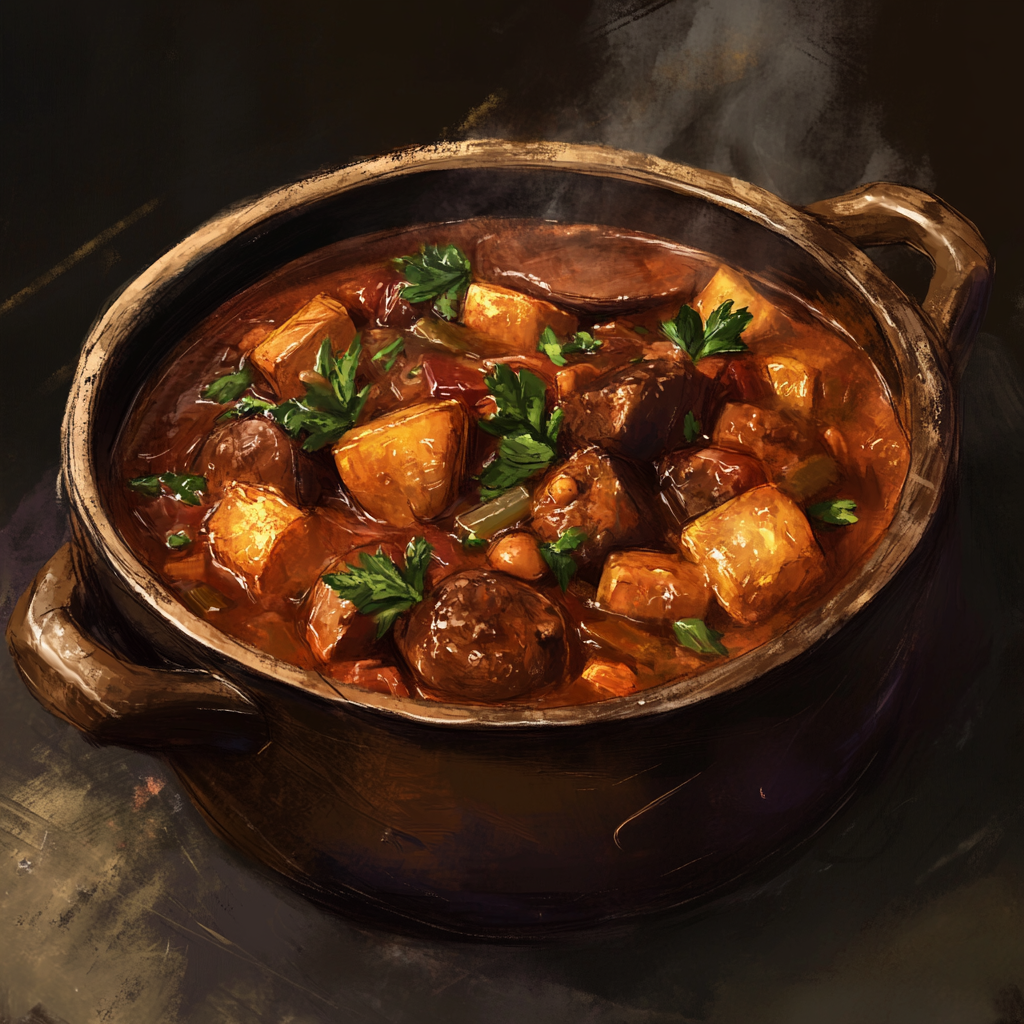Stoutfire Stew
Come now, my friend. It's been a long day. Sit by the fire, and I will prepare some stew for us. - Ruskev HunterThe Roveni Steppe Hosts of the Frostbound Steppes, known for their resilience and ingenuity, cherish a traditional dinner meal called Stoutfire Stew. This hearty dish combines Mammoth meat, wild root vegetables, and ice cabbage, a rare, tangy fruit native to the tundra. The preparation begins with slow-roasting the meat over a crackling fire, infusing it with the smoky aroma of wood. Next, the root vegetables, ice turnips, and snow yams are diced and simmered in a thick broth made from melted glacier water and bone marrow. Frostberries are added near the end of cooking, their tartness balancing the rich, savory flavors. The stew is served in hand-carved wooden bowls, accompanied by flatbread baked on hot stones. Its warmth and nourishment are essential for surviving the harsh, icy nights of the tundra.
Significance
Culturally, Stoutfire Stew is more than sustenance; it symbolizes the nomads' connection to their environment and harmony with nature. The meal is often shared communally, with stories of ancestors and legends of the land exchanged around the fire. Each ingredient holds symbolic value: Mammoth meat represents strength and endurance, root vegetables signify the tenacity to thrive even in harsh conditions, and ice cabbage is seen as a reminder of the unexpected joys found in life’s challenges. Preparing and sharing this stew is a sacred ritual, reinforcing bonds within the clan and their respect for the tundra's unforgiving beauty. Each ingredient shows that despite the harshness of the steppes, life can still thrive so long as they have the strength to withstand the cold and other dangers that cover the land.




We need more food related articles! That's very cool :)